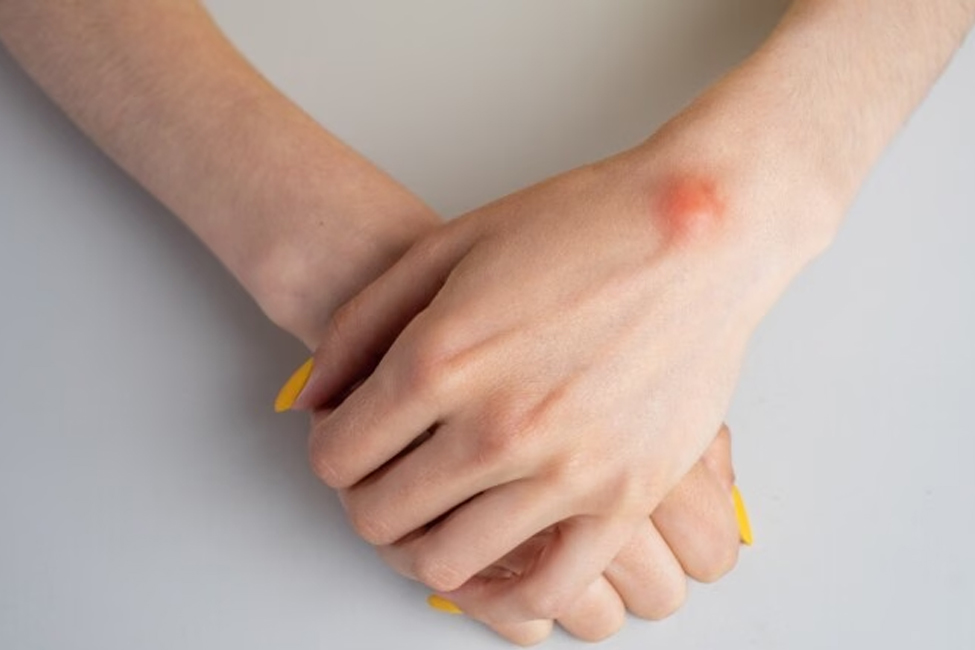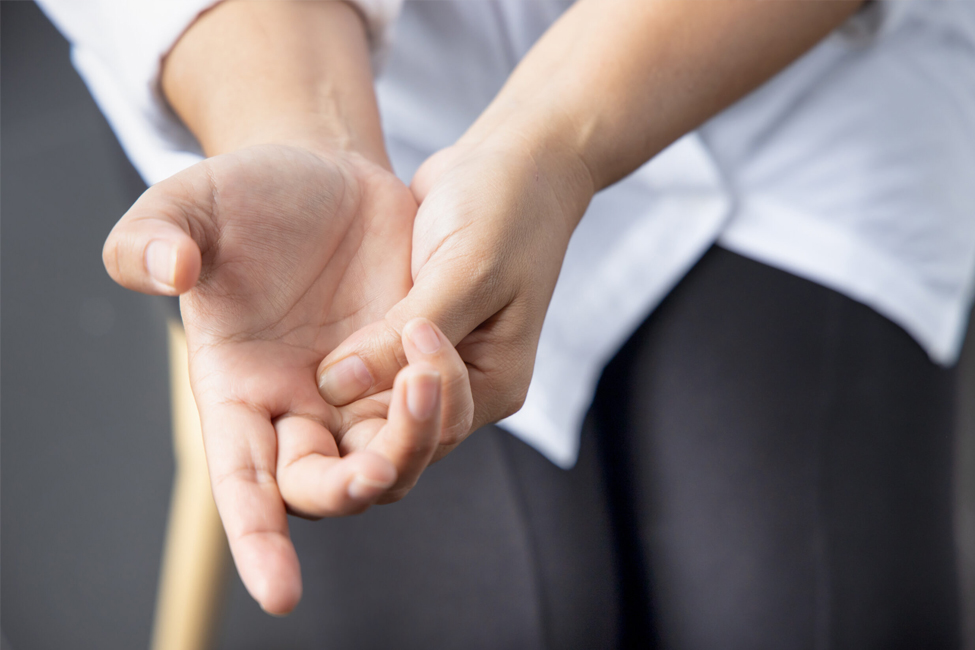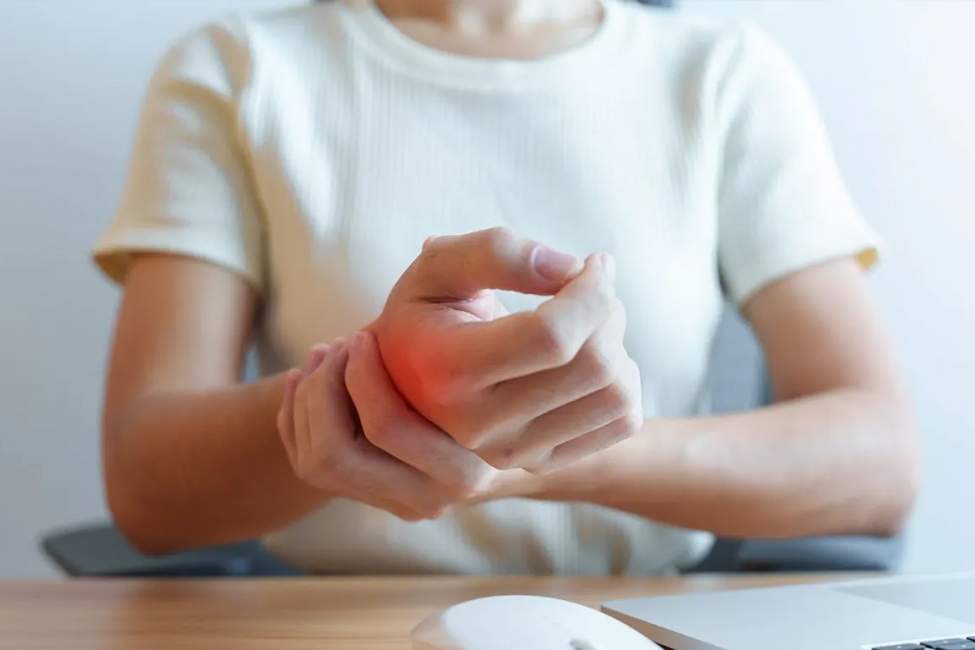Ganglion: Causes, Symptoms, Treatment, and Prevention
What is Ganglion?
A ganglion is a noncancerous, fluid-filled lump or cyst typically forming near the joints or tendons in the hands or wrists. These cysts can vary in size and may or may not cause pain. Ganglions are the most common soft tissue lump found in the hand and wrist.
Type of Ganglion
Ganglions can be categorised into two main types:
- Dorsal Ganglion: These ganglions appear on the back of the wrist and can be connected to a joint or tendon.
- Volar Ganglion: These ganglions form on the palm side of the wrist and are often associated with specific tendons.
How Common is Ganglion?
Ganglions are common and often seen in individuals with repetitive hand or wrist movements. They can affect people of various ages and backgrounds, although they are more prevalent among young adults. The exact prevalence can vary depending on occupation, activities, and individual susceptibility.
Causes of Ganglion
The exact cause of ganglion cysts is not always clear, but they are often linked to the following factors:
- Joint or Tendon Irritation: Irritation of the joint or tendon near the cyst site can lead to ganglion formation.
- Repetitive Movements: Engaging in repetitive hand or wrist movements, especially those that strain the joint or tendon, can contribute to ganglion development.
- Joint or Tendon Injury: A prior injury to the joint or tendon may trigger the formation of a ganglion.
- Fluid Accumulation: Ganglions are filled with synovial fluid, the lubricating fluid found in joints. The exact reason for fluid accumulation is not always clear.
Symptoms of Ganglion
If you have a ganglion, you may experience the following symptoms:
- Lump or Bump: The most noticeable symptom is a visible and often palpable lump or bump, typically near a joint or tendon in the hand or wrist.
- Pain or Discomfort: Some ganglions may be painful, especially if they press on nearby nerves or cause joint irritation.
- Limited Range of Motion: In some cases, ganglions can restrict joint movement or cause stiffness.
- Changes in Size: Ganglion cysts may change over time, sometimes getting larger or smaller.
- Pressure Sensation: A sensation of pressure or fullness in the affected area may be felt, especially when using the hand or wrist.
Diagnosis of Ganglion
Diagnosing a ganglion cyst typically involves the following steps:
Medical History
Your orthopaedic specialist will ask about your symptoms, including when you first noticed the lump and whether it causes pain or discomfort.
Physical Examination
The doctor will examine the lump, checking its size, location, and how it feels when touched.
Transillumination
Sometimes, a small flashlight (transilluminator) may shine light through the cyst, helping confirm it is a ganglion.
Imaging
In some situations, imaging tests like ultrasound or MRI may be ordered to visualise the cyst’s structure and rule out other conditions.
Aspiration
Your orthopaedic specialist may perform a procedure called aspiration, in which a fluid sample is removed from the cyst with a needle for analysis. This can help confirm the diagnosis and relieve symptoms.
Complications of Ganglion
Ganglion cysts are generally benign and do not lead to serious complications. However, in some cases, they can cause minor issues, including:
- Pain and Discomfort: Larger or symptomatic ganglion cysts can cause pain, discomfort, and limited joint movement.
- Nerve Compression: Rarely, a ganglion cyst may press on nearby nerves, causing tingling or numbness in the hand.
- Cosmetic Concerns: Some individuals may be concerned about the appearance of a visible lump on the hand or wrist.
Treatment Options for Ganglion
When dealing with a ganglion cyst, your orthopaedic specialist may recommend one of the following treatment options based on the size, location, and symptoms:
Observation
Small, painless ganglion cysts that don’t interfere with daily activities may be monitored without immediate treatment.
Aspiration
An orthopaedic specialist can use a needle to drain the fluid from the cyst, reducing its size and relieving symptoms.
Corticosteroid Injection
Injecting a corticosteroid medication into the cyst can help reduce inflammation and alleviate pain.
Immobilisation
Wearing a wrist splint or brace can limit movement and reduce irritation of the cyst.
Surgery
In some cases, when the cyst is large, painful, or recurrent, surgical removal may be recommended.
Preventing Ganglion
Preventing ganglion cysts can be challenging, but you can take some precautions to reduce the risk of developing them:
- If you engage in activities or sports that involve repetitive hand and wrist movements, consider wearing protective gear like wrist supports or braces.
- Maintain proper hand and wrist ergonomics during activities that require repetitive hand movements.
- Regularly practice hand and wrist exercises to improve strength and flexibility.
- Take regular breaks during activities that strain your hands and wrists to prevent overuse.
- If you notice any unusual lumps or bumps on your hands or wrists, or experience pain or discomfort, seek medical attention promptly.
Living with Ganglion
Living with a ganglion cyst typically involves these strategies:
- If your ganglion is small, painless, and does not interfere with daily activities, you may observe it without treatment.
- If your ganglion becomes painful or causes discomfort, you can manage it with over-the-counter pain relievers or other treatments recommended by your orthopaedic specialist.
- Your orthopaedic specialist may suggest draining the cyst through aspiration to alleviate symptoms.
- Wearing a wrist splint or brace can help limit the movement of the joint and reduce irritation of the cyst.
- Keep scheduled appointments with your orthopaedic specialist to monitor any changes in the cyst and receive guidance on managing your condition.
- If you have concerns about the appearance of the cyst, discuss cosmetic treatment options with your orthopaedic specialist.
Ganglion cysts are common, usually benign, fluid-filled lumps that can affect the hands and wrists. While they are generally not a cause for concern, they can cause discomfort and may benefit from treatment. If you or someone you know is experiencing symptoms related to a ganglion cyst, it’s important not to ignore your health and seek professional advice.
We encourage you to request an appointment with The Orthopaedic Practice and Surgery Clinic for expert care and consultation regarding ganglion cysts. Our specialised team can provide personalised treatment and guidance, helping you alleviate symptoms and make informed decisions about managing your ganglion.







